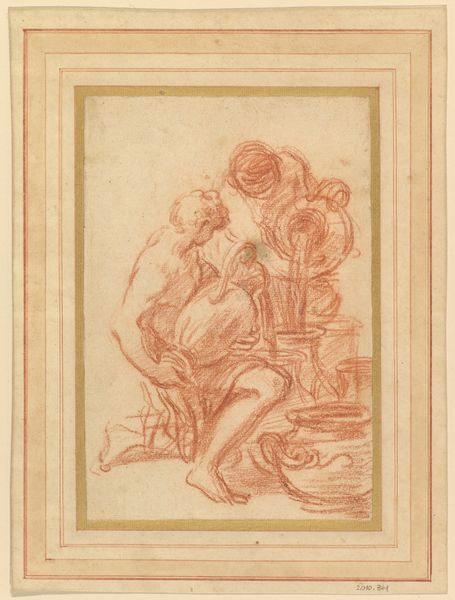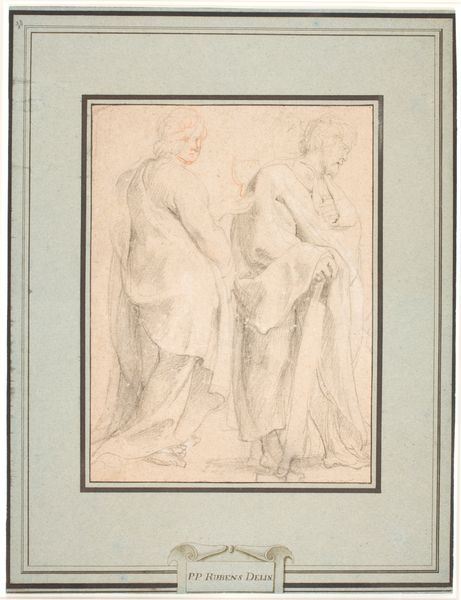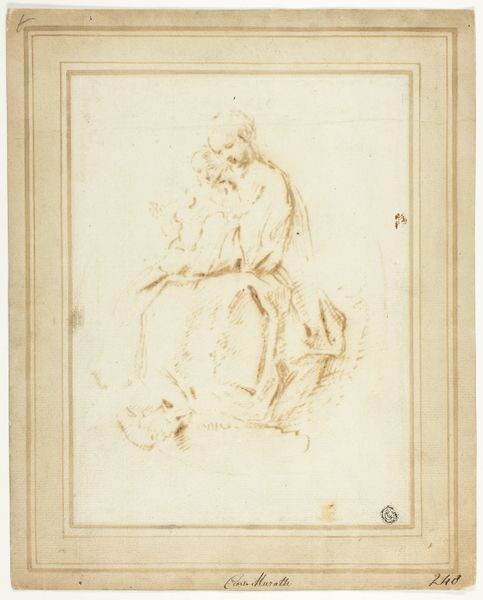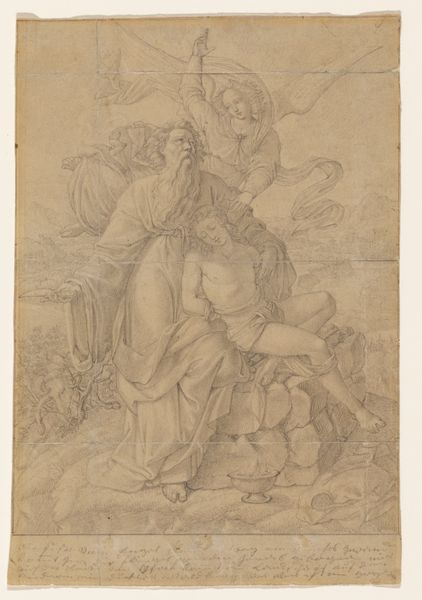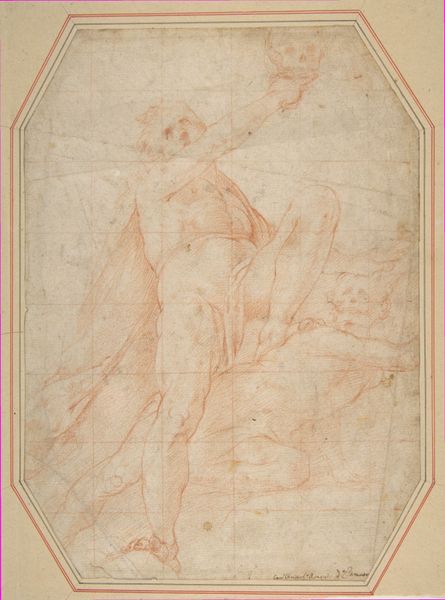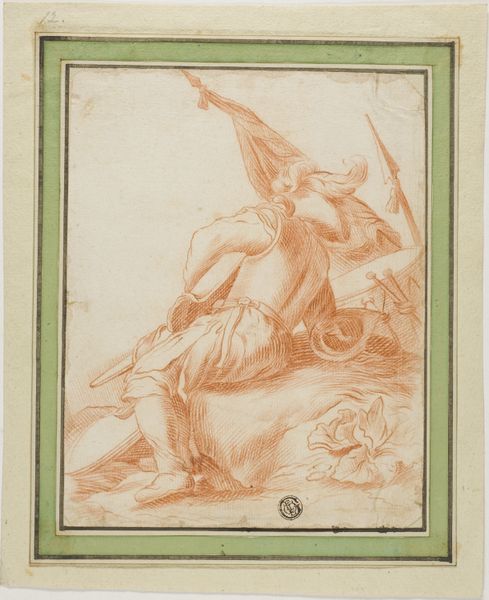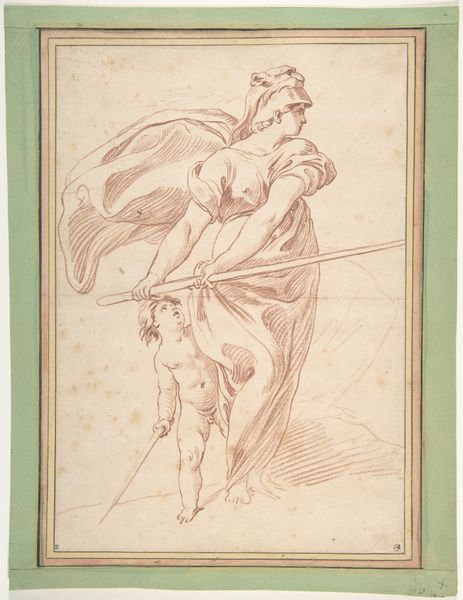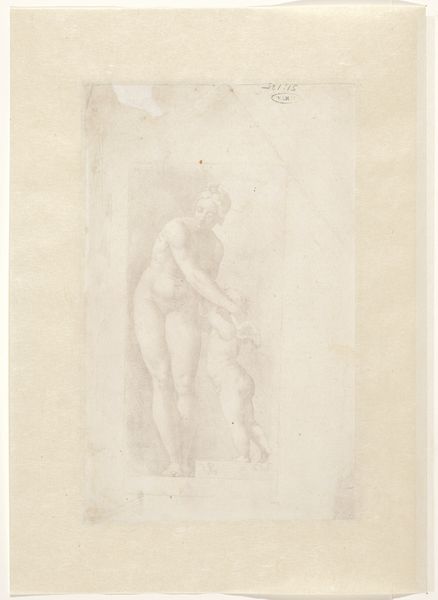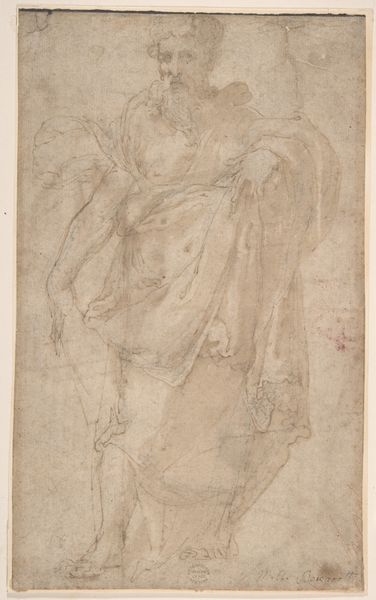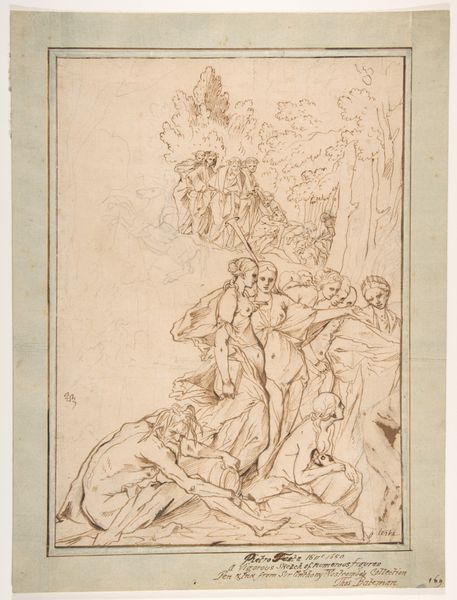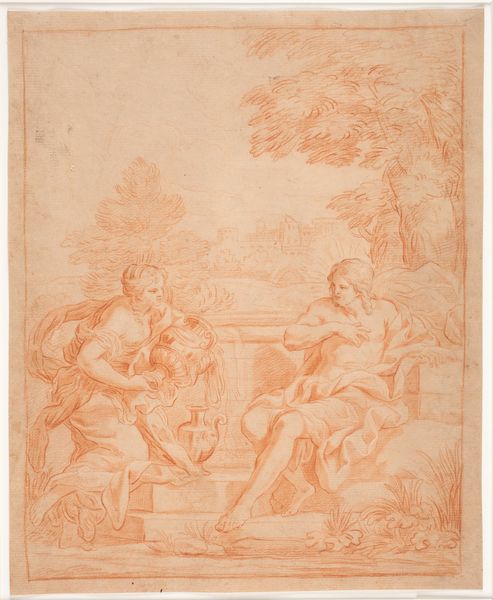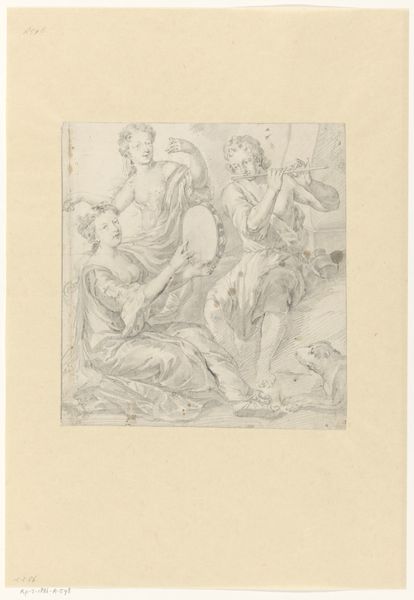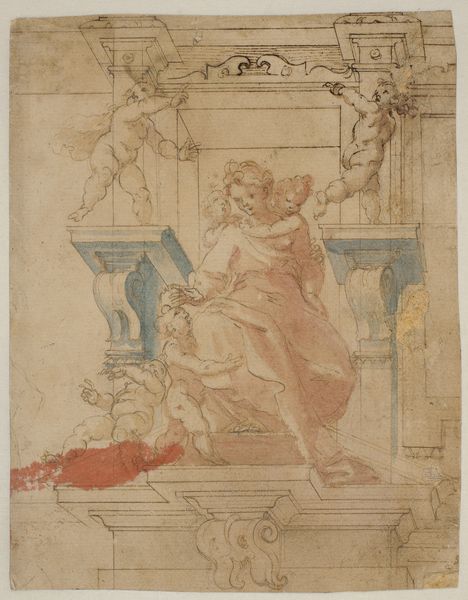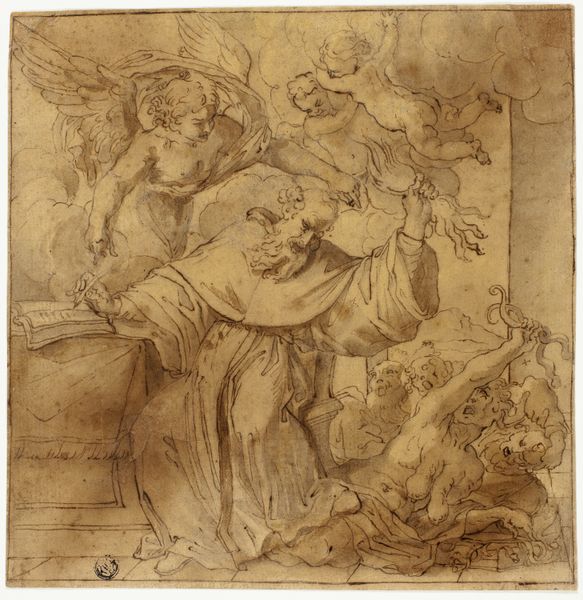
drawing, brown-ink, ink, pen
#
drawing
#
allegory
#
brown-ink
#
figuration
#
11_renaissance
#
ink
#
pen
#
history-painting
Dimensions: 10 3/4 x 7 1/2 in. (27.31 x 19.05 cm) (sheet)
Copyright: Public Domain
This drawing, attributed to Anton Eisenhoit, presents an allegory of Geography through the symbolic language of the Renaissance. Our figure, likely a personification of Geography, sits amidst classical ruins, holding a globe, the very world in her hands, a symbol of earthly dominion and knowledge. Consider the recurring motif of the globe throughout history, from ancient Roman depictions of emperors holding orbs, signifying their universal rule, to celestial globes charting the stars. This symbol transcends mere representation; it is a potent psychological assertion of control and understanding over the unknown. It is a powerful emblem deeply rooted in our collective consciousness. The act of holding the globe evokes primal feelings of mastery, shaping not just our knowledge but our perceived place within the cosmos. Observe how the globe has resurfaced, evolved, and taken on new meanings across time, a testament to its enduring power.
Comments
minneapolisinstituteofart almost 2 years ago
⋮
This drawing was convincingly attributed to Anton Eisenhoit by Monroe Warshaw recently. It has stumped connoisseurs for fifty years, bouncing from Haarlem to Rome, Prague to Fontainebleau. Given to the museum as a work of the circle of Bartholomäus Spranger, the sheet was subsequently attributed over the decades to Lelio Orsi (Konrad Oberhuber), Marten van Heemskerk, Vincent Sellaer (George Keyes), and Lucas de Heere. Despite the diversity of these artists, a common thread is apparent, the hand must belong to a mid to late 16th-century artist who worked in Rome, or, in the very least, was profoundly influenced by the art of Rome at that time. The German artist Anton Eisenhoit neatly fits this profile. He traveled to Rome around 1580, working there for a few years primarily as an engraver before returning to his native Westphalia, where his career as a goldsmith and medalist flourished. The linear style of the drawing and meticulous crosshatching are consistent with Eisenhoit's pen work. Likewise the particular figure type and pose can be traced in a number of the artist's prints--the monumental, graceful female figure type, with massive fingers and long, widely spaced toes, shown rhetorically gesturing as she demurely turns her head away, revealing an elegant down-turned profile.
Join the conversation
Join millions of artists and users on Artera today and experience the ultimate creative platform.
